Presentation
Firm painful dorsal penile cord-like swelling following vigorous sexual intercourse a few days prior to presentation.
Patient Data
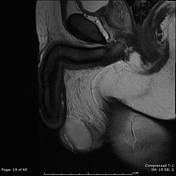

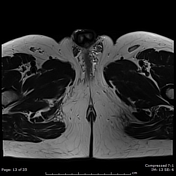

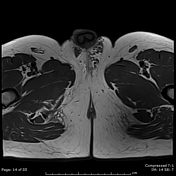

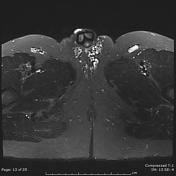

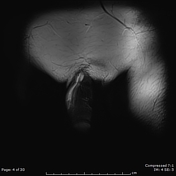





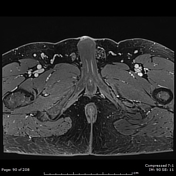

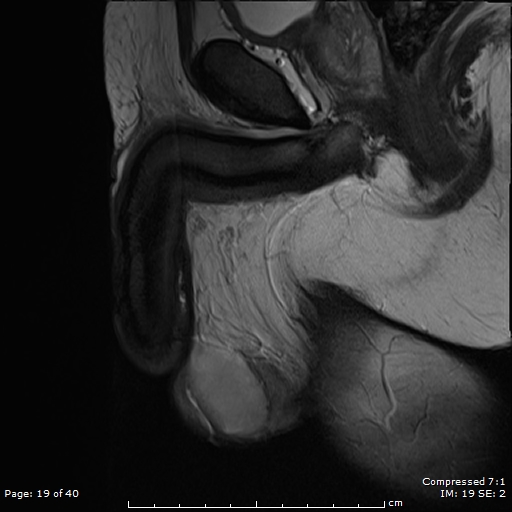
Grossly dilated superficial dorsal penile vein, containing a predominantly hyperintense intraluminal thrombus, best appreciated on the fat-suppressed T2-weighted images, corresponding to a curvilinear filling defect on the contrasted study, surrounded by minimal stranding of the surrounding soft-tissues, more pronounced at the origin of the vein and along the dorsal aspect of the penile body.
Incidental left varicocele.
Bilateral reactive inguinal lymphadenopathy.
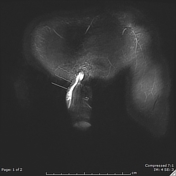
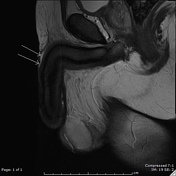
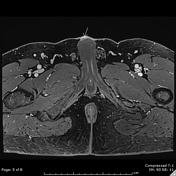

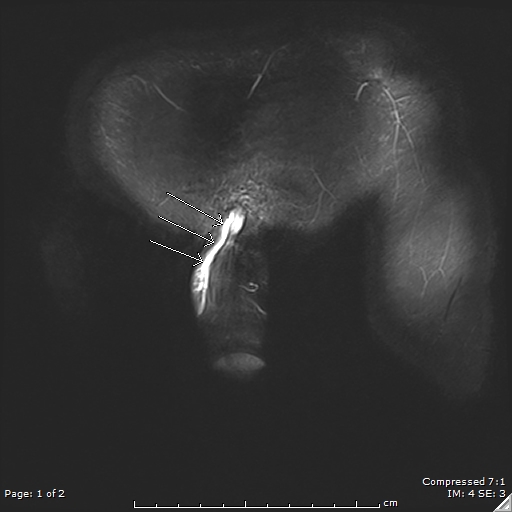
Arrows pointing to the hyperintense luminal thrombus on T2WI and filling defect on contrast-enhanced T1WI.
Case Discussion
Superficial dorsal penile vein thrombophlebitis or penile Mondor disease (PMD) is usually attributed to various causes. The main one of these is excessive or forceful sexual intercourse. Others may include penile trauma, infections (syphilis, candida), surgical manipulation, pelvic cancers, cancer-associated thromboembolism and hypercoagulable state.
It usually occurs in young adults, presenting with redness, swelling and throbbing pain with painful erection.
The MR signal intensity varies depending on the age of the thrombus. This patient presented in the subacute stage with a hyperintense luminal defect on all sequences.
PMD is a self-limiting condition, usually with spontaneous resolution in 6-9 weeks after onset of symptoms.




 Unable to process the form. Check for errors and try again.
Unable to process the form. Check for errors and try again.